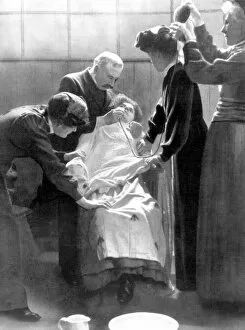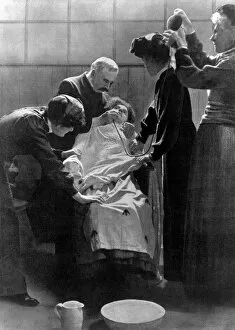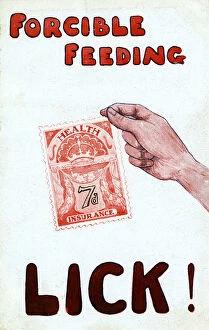Force Feeding Collection
"Force Feeding: A Dark Chapter in History's Fight for Rights" In 1912
All Professionally Made to Order for Quick Shipping
"Force Feeding: A Dark Chapter in History's Fight for Rights" In 1912, the force-feeding of suffragettes shocked the world as women fought tirelessly for their right to vote. Images from that time depict a woman suffragette prisoner being subjected to this brutal practice through a tube, symbolizing the lengths authorities would go to suppress their demands. Torturing women in prison who dared challenge the government was not limited to suffrage movements alone. In 1856, a lithograph titled "Forcing Slavery Down the Throat of A Freesoiler" captured another instance where oppression prevailed over freedom. The image depicted an enslaved person being forcibly fed ideas against their will. The theme continued into later years with McCarthyism's reign of fear and suspicion. In 1899, a stereograph called "McCarthys Wake (Part 2)" portrayed individuals being coerced into swallowing ideologies they did not believe in. Across borders, British suffragettes faced similar treatment while imprisoned for their activism. Color lithographs showcased these brave women enduring force-feeding behind bars – a stark reminder of society's resistance towards granting them equal rights. Even medical practices were not exempt from such cruelty. Francisco Goya's artworks like "To the Count Palatine" and "The Chinchillas, " created in 1799, highlighted how syringes and purges were used as instruments of control and suffering. Historical events also shed light on acts driven by political dissent. During the Boston Tea Party, Bostonians resorted to tarring and feathering an excise man while forcing tea down his throat – an act symbolic of rebellion against unjust taxation policies imposed by colonial rulers. Reflecting on these images throughout history reminds us that force-feeding represents more than just physical coercion; it embodies attempts to silence voices demanding change or challenging oppressive systems that deny basic human rights.











